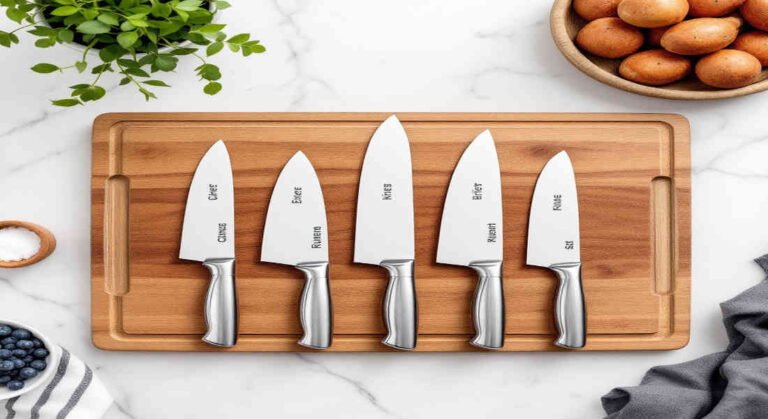When it comes to preparing meals at home, choosing the right kitchen knives is an essential yet often overlooked aspect of cooking. Whether you’re a beginner in the Kitchen or an experienced home chef, the tools you use can significantly impact your cooking experience. A good knife not only makes food preparation easier and more enjoyable but also enhances Safety and efficiency.
Why Choosing the Right Kitchen Knives Matters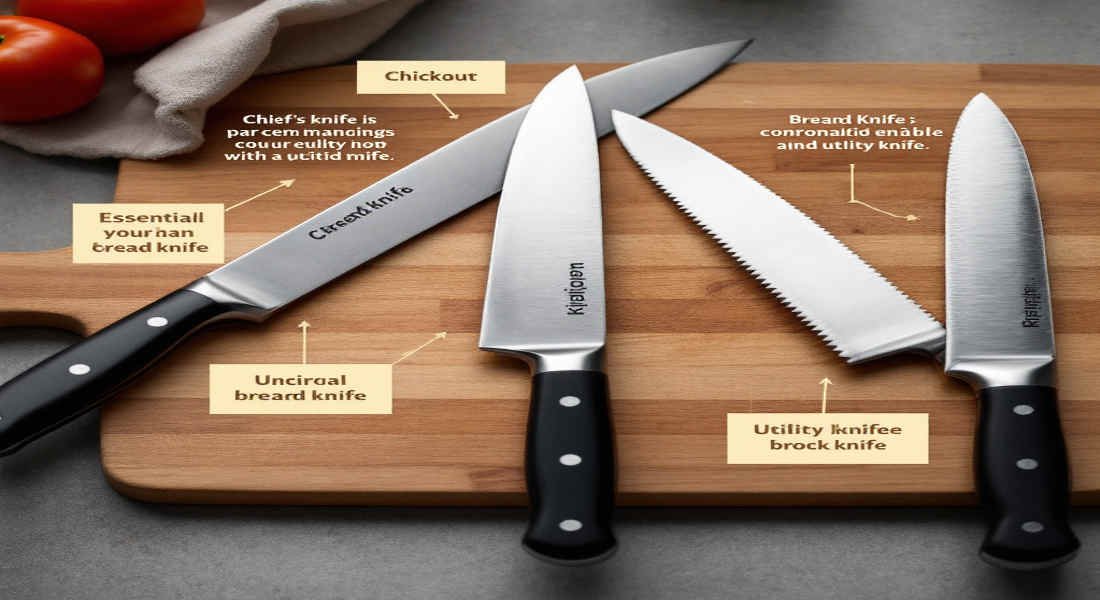
Selecting the right kitchen knives goes beyond aesthetics or brand names. The right tools can transform the way you approach cooking and food preparation. Let’s break down why this decision is so important:
Enhances Your Cooking Experience
A quality knife ensures precise cuts, making your preparation faster and more efficient. Chopping vegetables, slicing meats, or dicing herbs becomes effortless when you have the right tool for the job.
Improves Safety in the Kitchen
A sharp and ergonomic knife reduces the risk of accidents. Dull blades require more force to cut, increasing the chances of slipping and causing injuries. Investing in reliable knives ensures you’re working with tools designed for Safety.
Better Longevity and Maintenance
High-quality knives are designed to last. With proper care and maintenance, such as regular sharpening and cleaning, a good knife can serve you for years. In the long run, this saves you money compared to frequently replacing cheaper, low-quality knives.
Key Factors to Consider When Choosing Kitchen Knives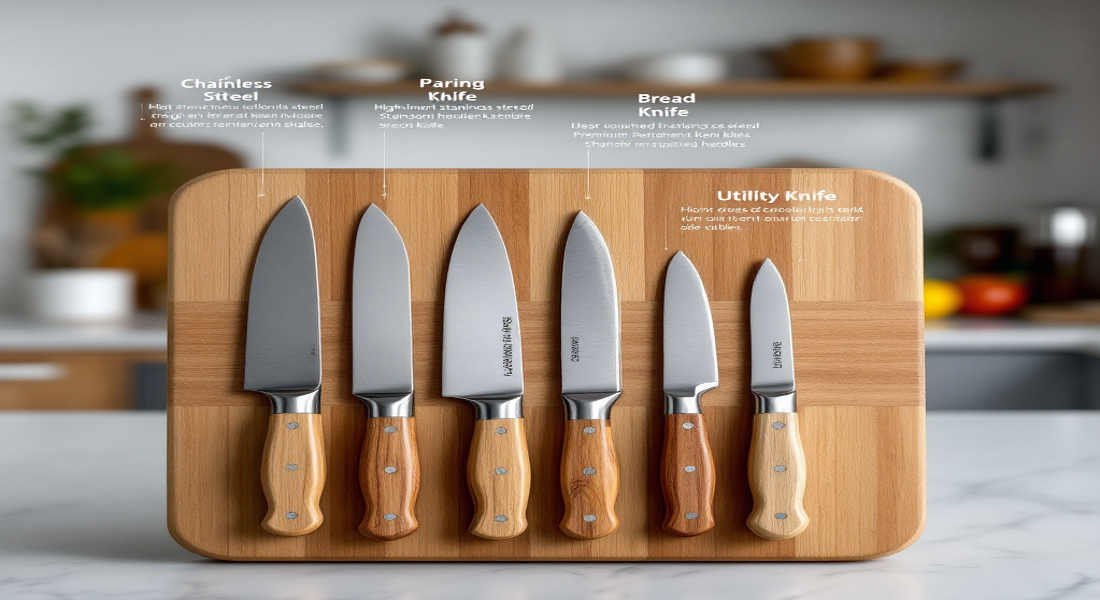
When learning how to choose house kitchen knives, several factors come into play. From blade materials to handle ergonomics, each aspect contributes to the knife’s performance and suitability for your needs.
You may also read (blocked drains in your home).
Blade Material
The material of the blade directly affects its sharpness, durability, and maintenance requirements. Here are the three most common options:
- Stainless Steel:
- Stainless steel knives are popular for their durability, rust resistance, and ease of maintenance. They’re ideal for home cooks who want low-maintenance tools without compromising performance.
- Carbon Steel:
- Carbon steel blades are known for their razor-sharp edges and excellent edge retention. However, they require more care as they are prone to rust and discoloration. Over time, they develop a unique patina, which many cooks find appealing.
- Ceramic:
- Lightweight and exceptionally sharp, ceramic knives are perfect for precise cuts. They’re also rust-resistant but tend to be brittle, meaning they can chip or break if dropped.
Blade MaterialProsCons
Stainless steel is durable, rust-resistant, and easy to care for. May not stay sharp as long as carbon steel.
Carbon Steel Ultra-sharp, great edge retention. Prone to rust, it requires regular care.
Ceramic Lightweight, rust-proof Brittle, can chip easily.
Blade Design and Shape
The shape of the blade determines its purpose. Different blade designs are suited for specific tasks:
- Wide Blades: Ideal for chopping vegetables or cutting through larger items like squash.
- Narrow Blades: Better for slicing tasks, such as cutting fish or delicate proteins.
Popular Blade Shapes:
- Chef’s Knife: The versatile all-rounder for chopping, slicing, and dicing.
- Santoku: A Japanese design perfect for precision cutting and thin slicing.
- Nakiri: Ideal for chopping vegetables with its straight edge and flat blade.
- Cleaver: A hefty blade for cutting through bones and tough materials.
Size and Weight
The size and weight of a knife should feel comfortable in your hand.
- Size: Larger knives, such as an 8-inch chef’s knife, are versatile but may feel unwieldy to beginners. Smaller knives, such as a 6-inch utility knife, are easier to control for delicate tasks.
- Weight: Heavier knives provide more cutting power but can cause fatigue during prolonged use. A balanced knife ensures better control and comfort.
Handle Material and Ergonomics
The handle plays a crucial role in how a knife feels in your hand.
- Wood Handles: Provide a natural, warm grip but require more maintenance to prevent cracking or warping.
- Plastic Handles are lightweight and resistant to moisture, making them easy to clean.
- Metal Handles: Durable and sleek, but may feel slippery when wet.
A well-designed handle should provide a firm grip, balance, and comfort during use. Test different materials to see which suits you best.
Sharpness and Edge Retention
Sharpness isn’t just about cutting ease—it’s also about Safety. A sharp knife requires less force, reducing the risk of slipping.
- Edge Retention: This refers to how long a knife stays sharp before requiring sharpening. High-carbon steel knives excel in this area, while stainless steel may need more frequent maintenance.
- Sharpening Frequency: Consider how often you’re willing to sharpen your knives. Tools like whetstones or honing rods can help maintain the edge.
Types of Kitchen Knives Every Home Should Have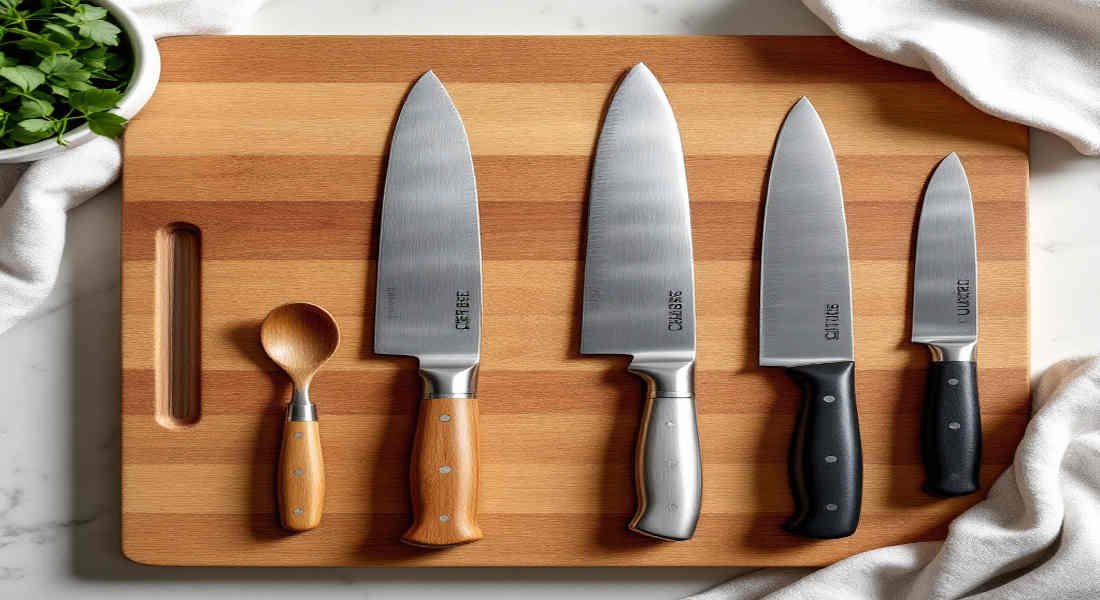
When building your kitchen knife collection, focus on essential knives that can handle a variety of tasks.
Chef’s Knife
The chef’s knife is the most versatile tool in your Kitchen. Its broad blade and slightly curved edge make it perfect for chopping, slicing, and dicing.
Paring Knife
A paring knife is small but mighty, designed for precision tasks like peeling, trimming, and cutting smaller ingredients.
Serrated Knife (Bread Knife)
With its saw-like edge, a serrated knife is perfect for cutting through crusty bread, tomatoes, and other foods with tough exteriors and soft interiors.
Utility Knife
A utility knife bridges the gap between a chef’s knife and a paring knife. It’s great for small to medium tasks, such as slicing fruits or trimming meat.
Optional Specialty Knives
Depending on your cooking style, you may find specialty knives like boning knives, cleavers, or Santoku knives useful. For instance:
You may also read (understanding home kitchen faucet thread).
- A boning knife is ideal for removing bones from meat.
- A cleaver is perfect for chopping through tough cuts of beef or joints.
How to Choose Kitchen Knives Based on Your Cooking Styl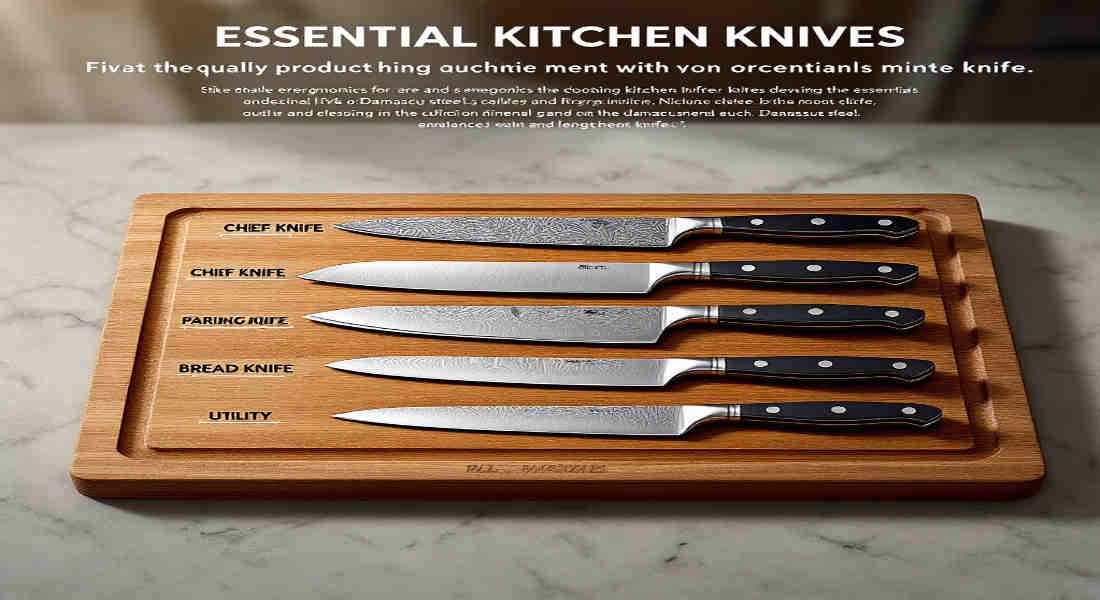
Your cooking habits should guide your knife selection. If you frequently cook with fresh vegetables, a Nakiri or Santoku knife is a great addition. Meat lovers may benefit from a cleaver or boning knife.
Budgeting for Kitchen Knives
Quality kitchen knives can range from affordable to premium. Here’s how to prioritize your spending:
- Invest in Essentials: Start with one high-quality chef’s knife, then gradually expand your collection.
- Budget-Friendly Options: For casual cooks, mid-range stainless steel knives offer excellent value.
- When to Splurge: If you’re an avid home chef, investing in handcrafted knives or high-carbon steel options may be worth it.
Maintenance Tips to Keep Your Knives Sharp and Safe
Proper care extends the life of your knives.
- Sharpening: Use a whetstone or honing rod regularly.
- Storage: Store knives in a knife block, magnetic strip, or blade guards to prevent damage.
- Cleaning: Hand wash knives with mild soap and dry immediately to prevent rust.
Common Mistakes to Avoid
- Focusing on Looks: A knife might look stunning, but if it doesn’t feel right in your hand, it’s not worth it.
- Ignoring Size and Weight: Choose a knife proportionate to your hand for better control.
- Neglecting Maintenance: Even the best knives need care to perform well.
Recommended Knives and Brands
Some trusted brands include:
- Wüsthof: Known for durability and precision.
- Shun: Offers premium Japanese knives.
- Victorinox: Great for budget-friendly options.
You may also read (how can i fix a hot room in my house).
